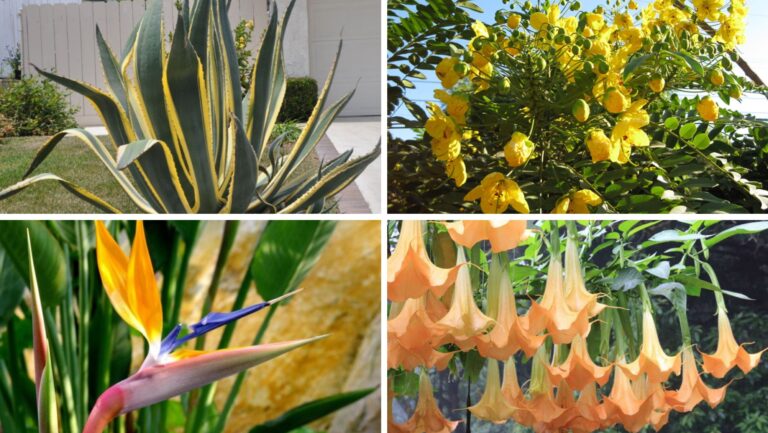The beautiful city of Los Angeles has always been the place to visit if you are a fan of constantly pleasant and warm weather and enjoyable climate. Is there anyone in the world who would have something about living in a state of constant sun, with temperatures ranging from 20 °C to 30+ °C? Such a favorable place exists thanks to the unique topography of the region and the sublime Mediterranean climate, although the city is thousands of miles away from the places that gave such climate its name.
One of the things these conditions are greatly beneficial for is plant life, and Los Angeles has hundreds, if not thousands to choose from. This article will serve as a guide to the most famous and beautiful flowers and trees of Los Angeles, a colorful city with a vibrant nature all around.
In case you need wonderful flower arrangements for a special occasion in Los Angeles, make sure to visit flowershopn5.com. They offer a wide variety of bouquets, flower box arrangements, and pot creations with fresh, beautiful flowers. Their price range tends to different pocket depths, and there is truly something for everyone.
1. Mexican Fan Palm
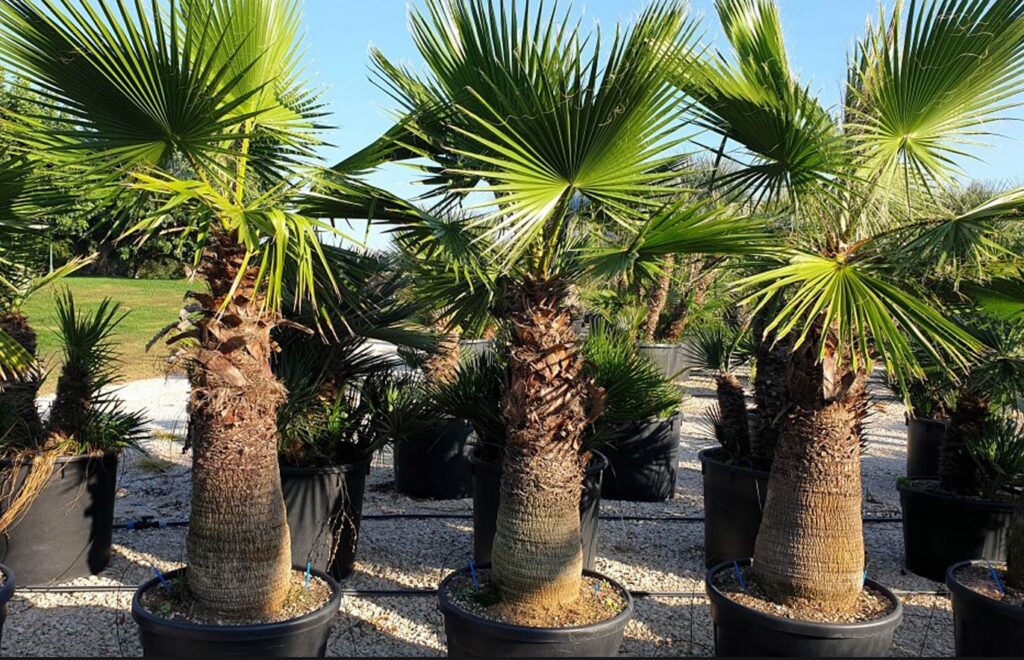
Let us start off the list with the staple tree you cane encounter all over LA, the famous Mexican fan palm. These are very fast-growing trees capable of reaching more than 100 feet in height. They are the most common palm tree in the city, as 25,000 of them were planted in 1931 to be ready for the 1932 Olympic Games. They have a lifespan of about 100 years, and although it is not possible to say how many of them survive from back then, tens of thousands of new ones have been planted and cared for since.
2. Orange Tress
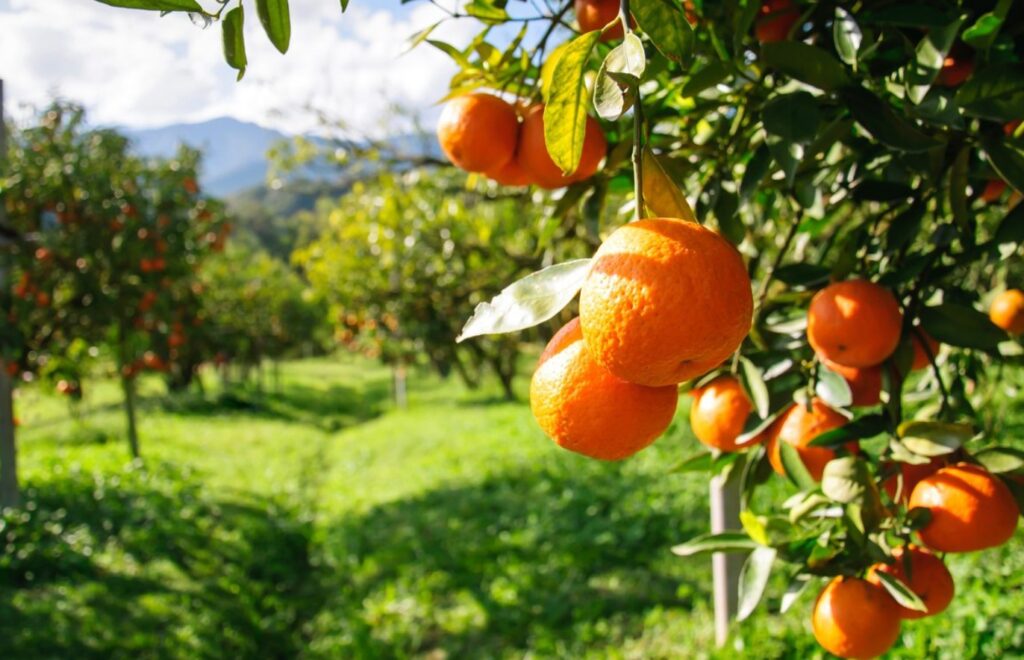
Back in the times of exploration and settling of America, oranges were one of the things that arrived in Southern California. The Spanish missionaries brought them and started planting them ever since 1804. By the 1870s, the industry really blossomed, and seedless varieties were imported from Brazil. Since then, vast areas were covered in orange trees, most notably Pasadena, The San Fernando Balley, and Orange County. Nowadays, you can see orange trees throughout the city.
3. Angel’s Trumpet
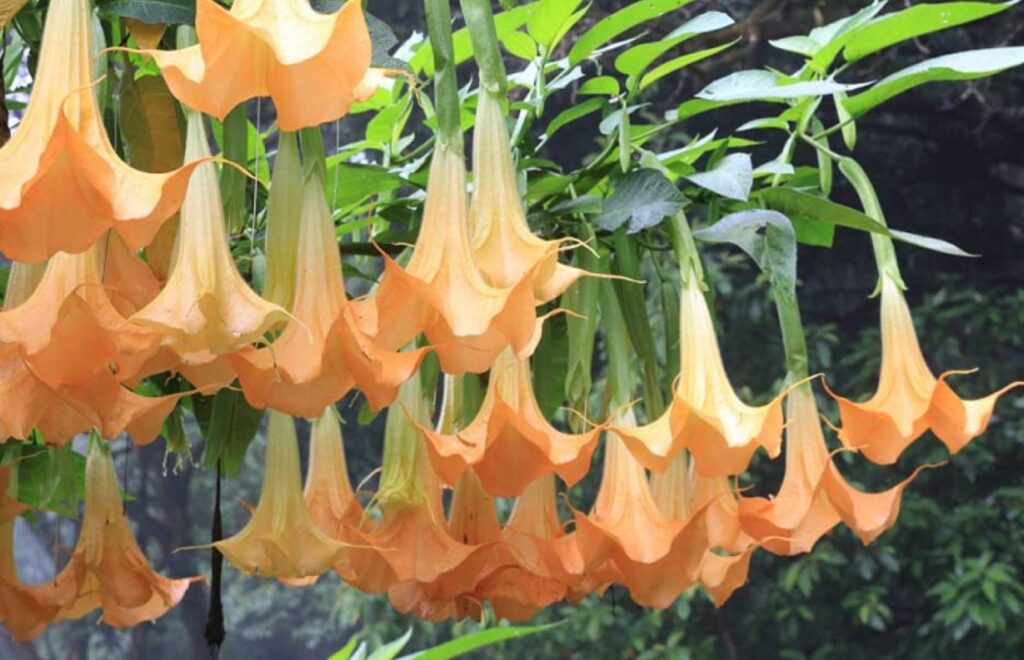
Moving onto flowers, the first has a truly wonderful name. While the yellow flower resembles the popular musical instrument and looks really beautiful, it actually has hallucinogenic properties and they are very toxic. Multiple inexperienced people not educated in handling experience trouble from the flower every year.
4. Jacaranda
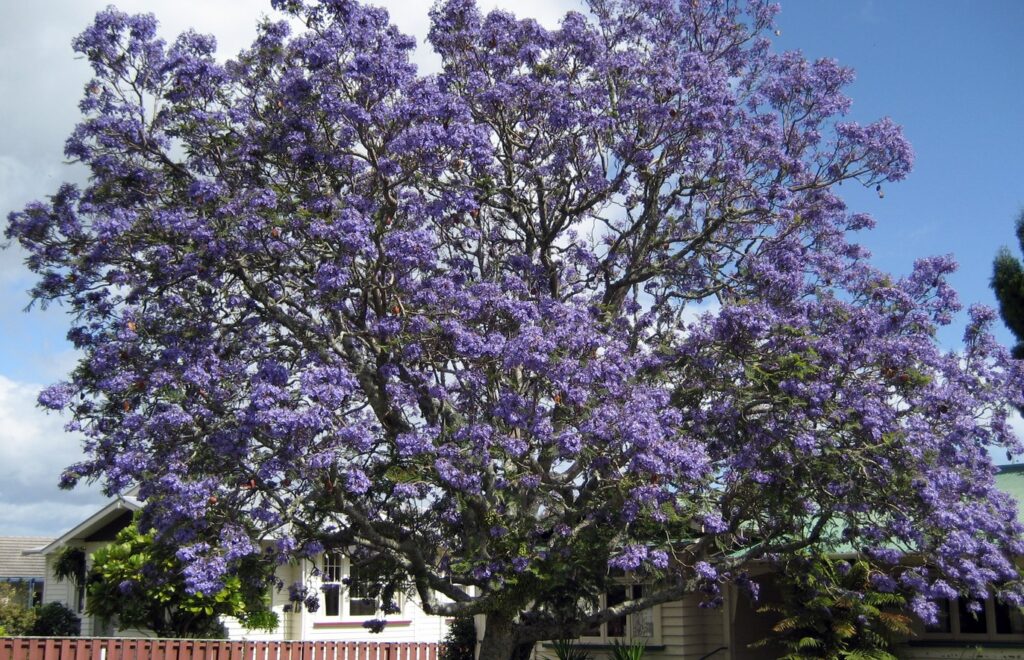
The purple flower was imported from South America and it seems like nothing special for 10 months a year. It is capable of providing large areas of shade due to its wide canopy, as people are used to finding shelter from the sun underneath its branches. They are famous for being very quiet initially, until they suddenly turn violet in the spring, revealing the beautiful and easily recognizable flowers. The whole city becomes violet purple for a period, and the locals love it.
5. Bird of Paradise
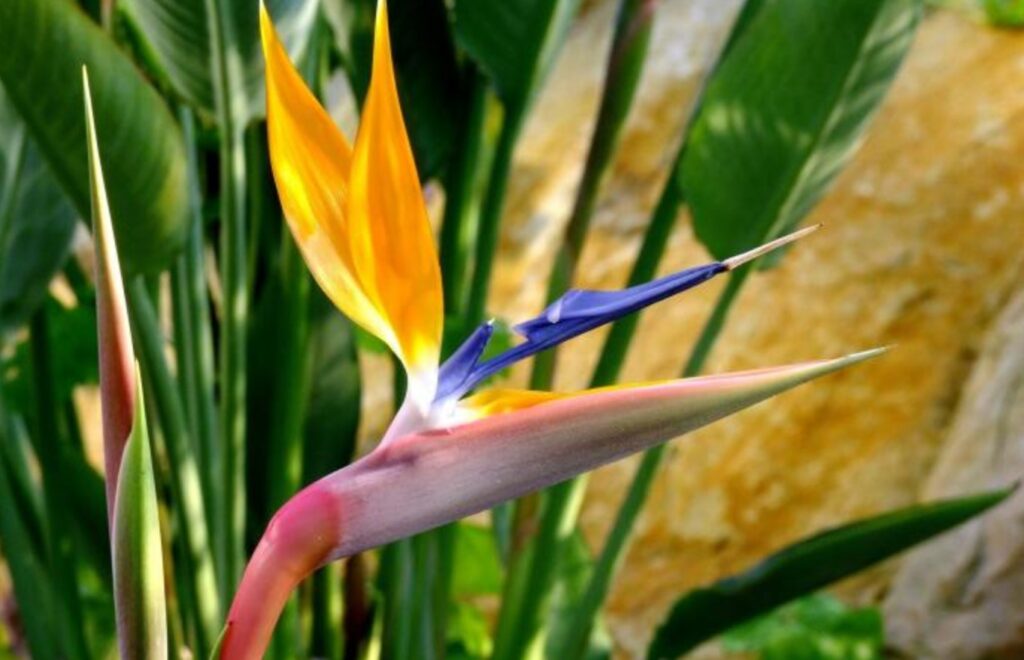
This flower is the official flower of the City of Los Angeles. It is a transplant imported from South Africa way back in 1853 and it blooms for the whole year, fitting for a city that is bathed in the sun year-round. During drought periods, it is known to suspend its growth, while it loves flowering in winter months. The nectar of the plant is the favorite of pollinators like hummingbirds, which can often be seen around the flowers.
6. Gold Medallion Tree
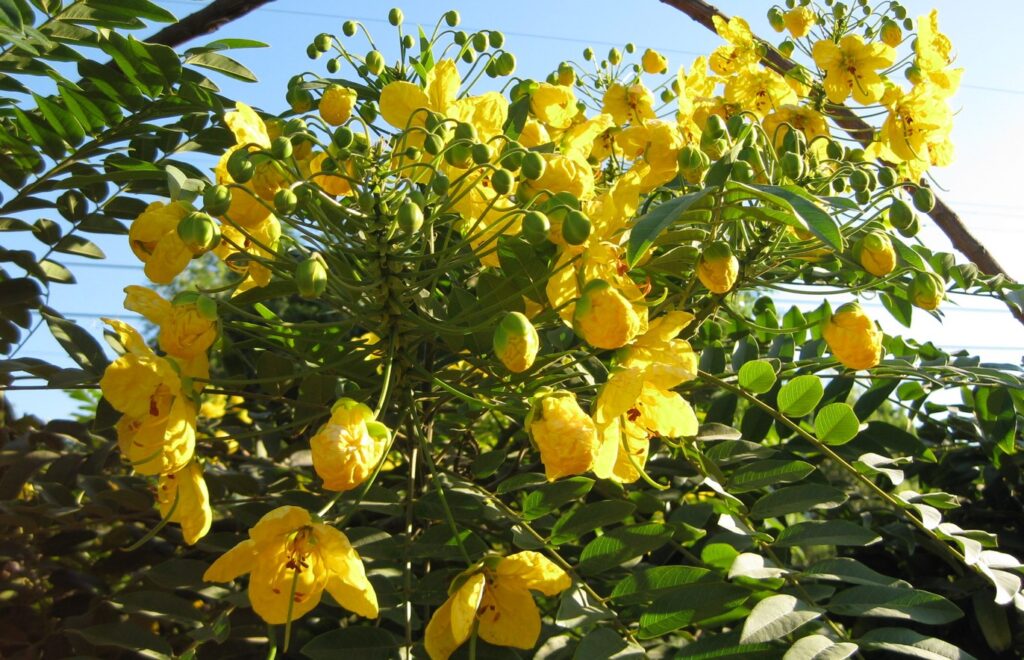
The Brazil native tree is somewhat of a recent addition to the city. It came thanks to the LA County Arboretum plant research programs that took place during the 1960s and 1970s. This is a very hardy tree capable of surviving droughts. Besides looking pretty, it has practical use in reforestation of natural landscapes destroyed in fires or grazed by animals. Their yellow flower is beautiful to look at, and the blossoms are the sign that the brightening summer is nearing its end and slowly descending into early fall.
7. Jasmine
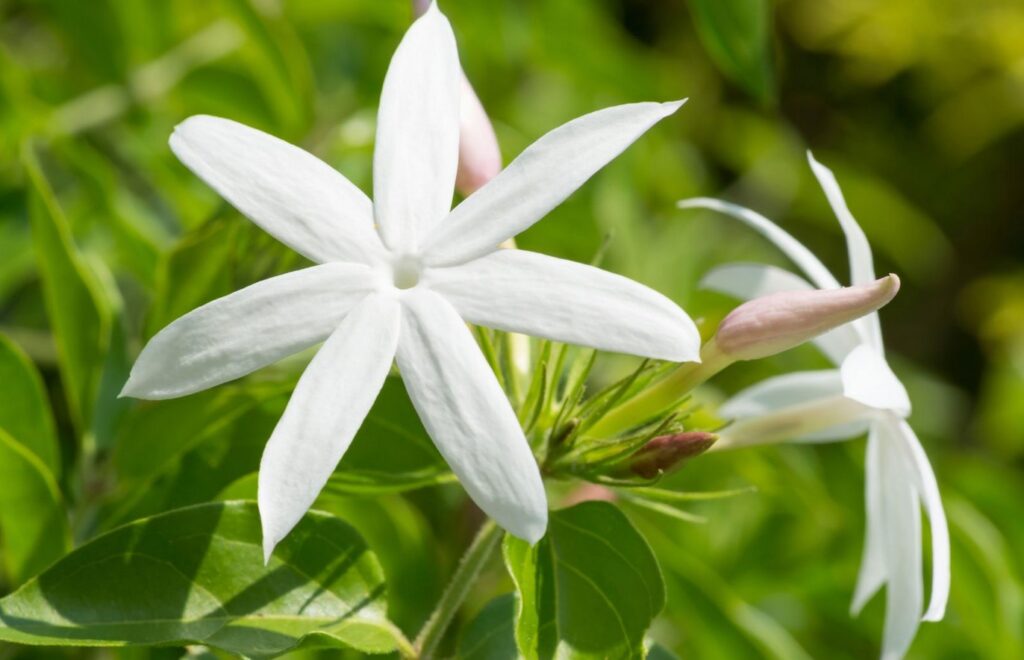
Jasmine is a famous flower all over the world. It blooms during the night between the months of June and September, and it has the fitting nickname “queen of the night.” It is adored for its intoxicating scent that will make you feel so relaxed and inspired. People love planting it as it makes them feel like they have their own royal garden in the backyard, just because of the scent!
8. Century Plant
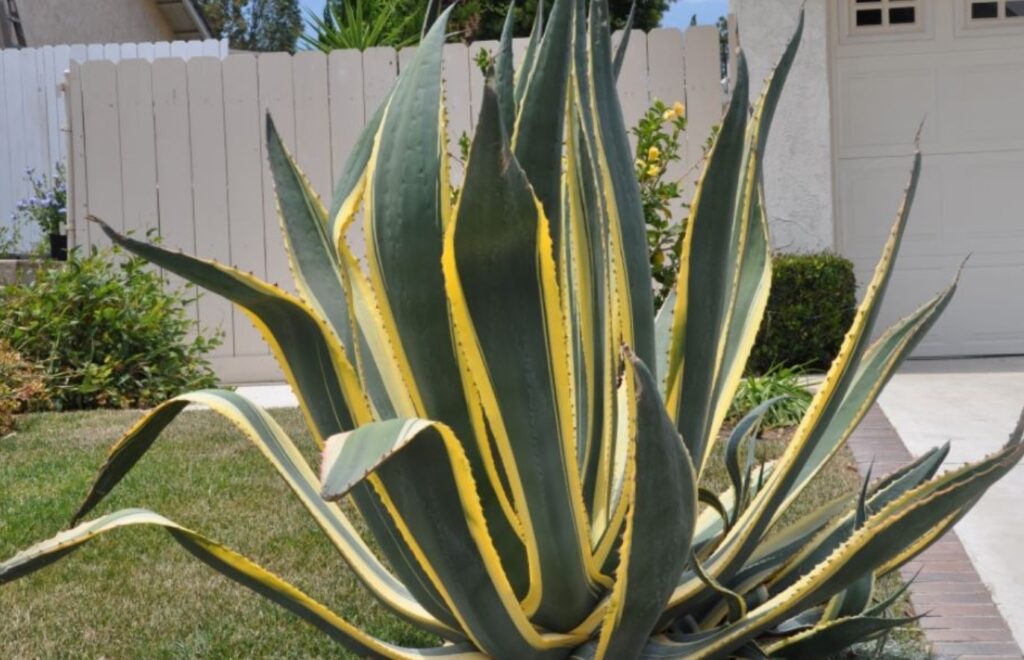
Agave plants do not need almost any irrigation, making them perfect for the sandy, alkaline, and dry soil of South California. They are mature anywhere between 10 to 25 years, after which they sprout a flower stalk resembling asparagus. They come in several colors, including blue and stripy varieties, and have barbed leaves. The century plant is able to reach about 6 feet in height, and the leaves are toxic and known to cause rashes.
Bonus:
LA has many popular flowers and trees, and although not all are used for flower arrangements, they are still favorites to plant and grow. Pampas grass, prickly pear, our lord’s candle, and foxtail agave are all present throughout the metropolis. Bougainvillea, bird of paradise, Moreton Bay fig, and the California fan palm also deserve more than a mention, as we could spend days writing about the rich and exciting plant life of California’s most popular city.
Conclusion
If some of these trees and flowers sound new to you and if you are not sure how they actually look, do some research and we promise you will not be disappointed. They would not be so popular in a city of over 4 million people if they were not beautiful, convenient, and useful. Roses, matthiola, hydrangea, astilbe, carnations, and the rest of the famous flowers will never go out of style and you can find them all over the world. But for a real Los Angeles flower arrangement, you need some of its signature flowers and trees to make it special. They are equally great for you to grow them in your garden, and to have them received or given away as a special occasion gift!

